To maintain the pristine appearance of your outdoor space, addressing the issue of weeds between paving slabs is crucial. But how can you effectively tackle this common nuisance that threatens the neatness of your walkways and patios?
By implementing a few simple yet strategic methods, you can prevent those pesky weeds from rearing their unwanted heads and keep your paved surfaces clean and well-maintained.
Key Takeaways
- Choose weed-resistant materials like concrete, brick, or natural stone.
- Install geotextile fabric to create a barrier against weed growth.
- Seal gaps between paving slabs with jointing compounds.
- Use natural weed deterrents like vinegar, boiling water, or salt.
Choosing the Right Paving Material
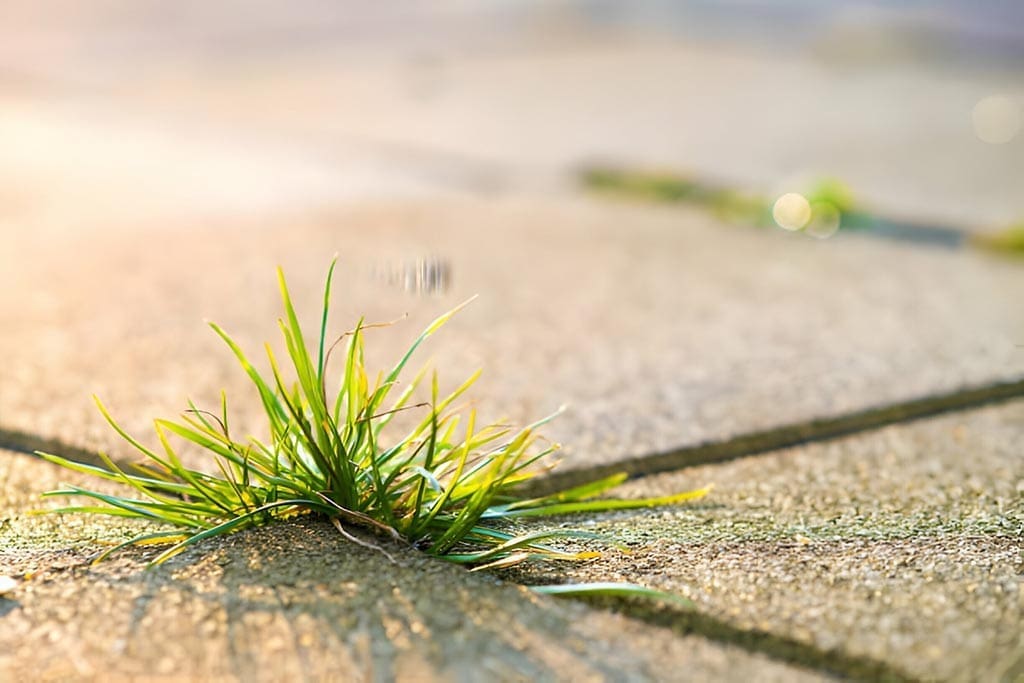
When selecting the appropriate paving material to prevent weed growth between paving slabs, prioritize durability and low maintenance requirements. Opt for concrete, natural stone, or brick pavers that are sturdy and less susceptible to weed penetration.
Proper maintenance is key to preventing weed growth; regularly sweep the area to remove debris and dirt that could foster weed growth. Additionally, consider sealing the gaps between the paving slabs with polymeric sand to inhibit weed germination and enhance stability.
Routine inspections of the paved area are essential to spot any early signs of weed growth and address them promptly. Choosing a robust paving material and staying vigilant with maintenance and inspections can deter weeds from sprouting between your paving slabs.
Installing Weed Barrier Fabric
To further fortify your defence against weed growth between paving slabs, consider installing weed barrier fabric beneath the surface for added protection. Proper installation is crucial for its long-term effectiveness in preventing weed growth.
Begin by clearing the area between the paving slabs of any existing weeds, debris, or roots. Measure and cut the fabric to fit the space, ensuring it covers the entire area where weeds could grow.
Lay it down evenly along the ground once the fabric is cut to size. Make sure to overlap the edges of the fabric to prevent gaps where weeds could emerge. Secure the fabric in place using landscape fabric pins or staples to keep it from shifting over time.
Regularly Sweeping and Cleaning
Consider implementing a regular sweeping and cleaning routine to prevent weed growth between paving slabs. This simple maintenance tip can go a long way in weed prevention. Regularly sweeping debris like leaves, dirt, and other organic matter from the gaps in your paving slabs removes the potential nutrients that weeds need to grow. Also, cleaning the slabs’ surface can help prevent weed seeds from settling and germinating.
To maintain a weed-free area, sweep and clean the paving slabs at least once a week or more frequently if debris accumulates. Use a stiff brush or a power washer to clean the surface and remove any stubborn dirt or grime. By keeping the area clean and free of debris, you create a less hospitable environment for weeds to take root.
Incorporating regular sweeping and cleaning into your maintenance routine can significantly reduce the likelihood of weeds sprouting between your paving slabs.
Using Natural Weed Killers
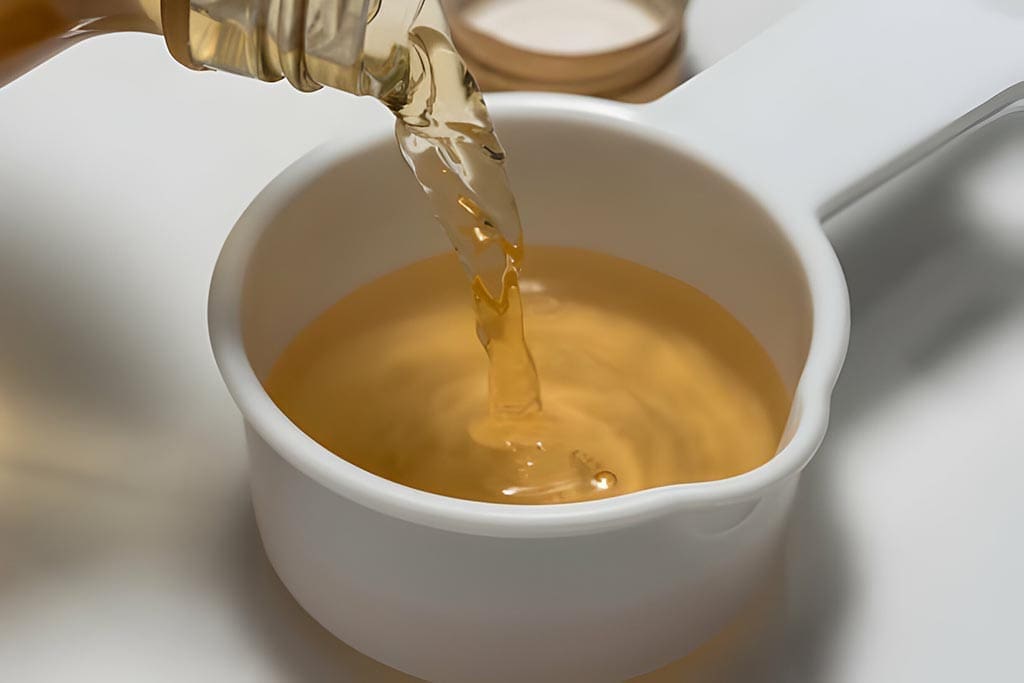
Incorporating natural weed killers can be a sustainable solution to inhibit weed growth for effective weed control between paving slabs. Organic alternatives are a popular choice for those looking to avoid harsh chemicals.
One DIY solution is mixing white vinegar with a small dish soap. The acetic acid in the vinegar helps kill weeds, while the soap helps the solution stick to the weed leaves. Simply spray this mixture on the weeds, avoiding any desirable plants as it can harm them too.
Another natural weed killer is boiling water. Pouring boiling water directly onto the weeds will scald and kill them. This method is best used for weeds growing in the cracks between paving slabs, as it can also affect surrounding plants. Remember to exercise caution when handling boiling water.
These organic alternatives provide effective weed control while being environmentally friendly.
Sealing the Cracks and Joints
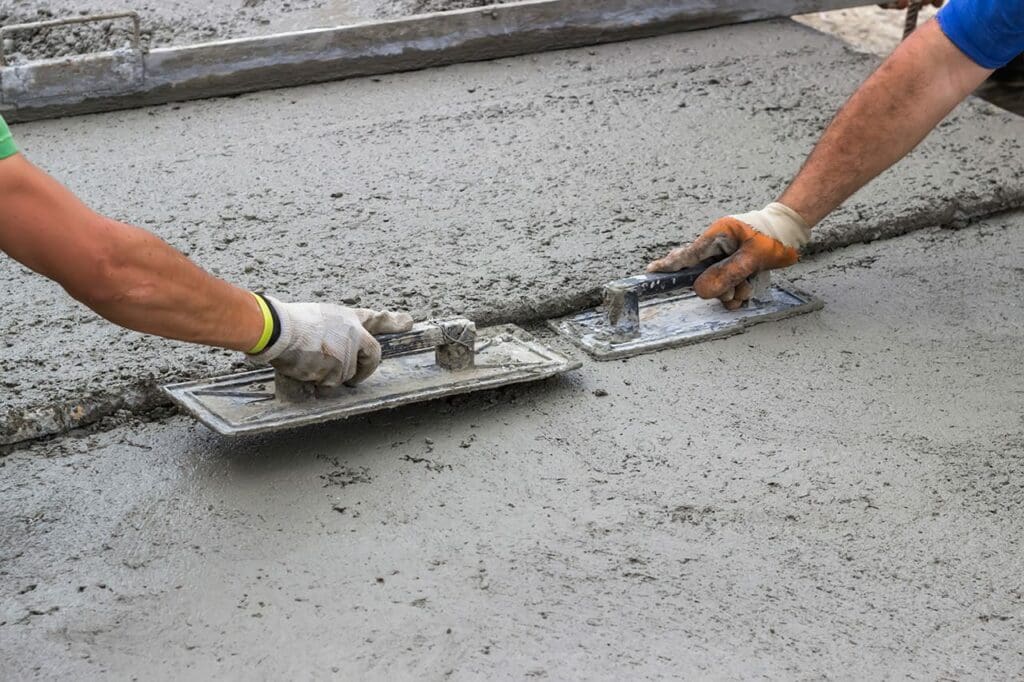
Want to prevent weed growth between your paving slabs effectively? Sealing the cracks and joints is a crucial step in ensuring long-lasting protection.
Begin by filling the joints with joint sand. This material helps to stabilize the pavers and prevent weed seeds from finding a home in the gaps.
After filling the joints, the next step is to apply a polymeric sealant. This sealant locks the joint sand in place, creating a barrier inhibiting weed growth.
Polymeric sealants are specially formulated to harden when exposed to moisture, creating a strong bond that keeps weeds at bay. To apply the sealant, simply pour it over the paved surface and sweep it into the joints using a broom.
Once the sealant dries, it forms a durable, flexible barrier that resists weed penetration. Regularly inspect the sealed cracks and joints for any signs of wear and reapply the sealant as needed to maintain optimal weed prevention.
Frequently Asked Questions
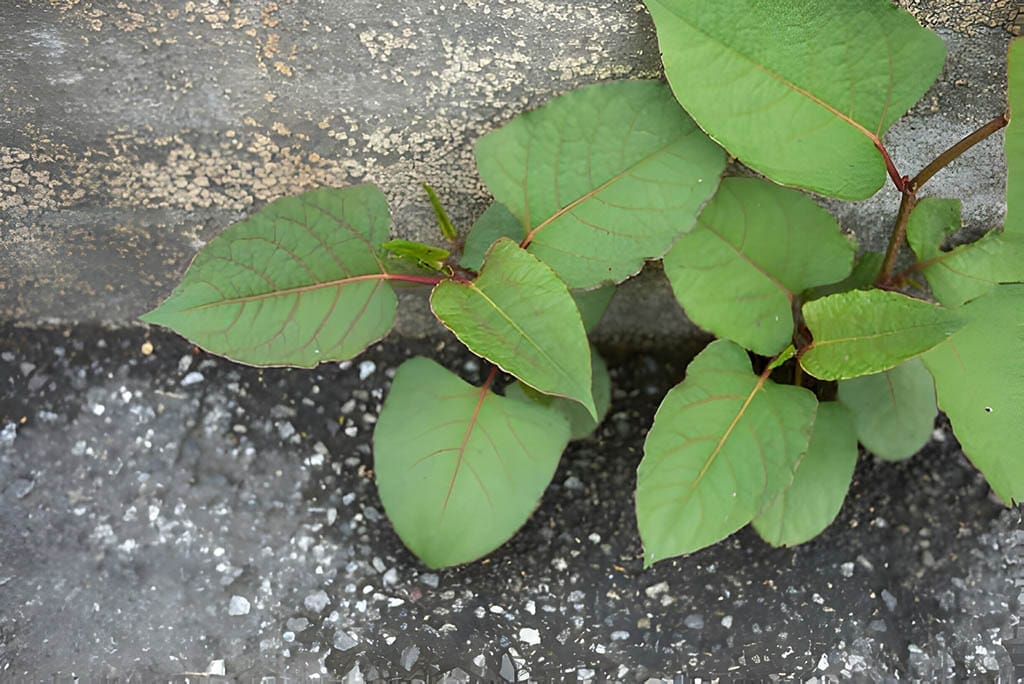
Can Weeds Grow Between Paving Slabs if the Gaps Are Filled With Sand or Gravel?
Weeds can still grow between paving slabs even if gaps are filled with sand or gravel. For effective weed prevention, consider using a weed barrier fabric under the sand or gravel to provide an additional layer of protection.
Will Using a Pressure Washer to Clean the Paving Slabs Also Help Prevent Weeds From Growing?
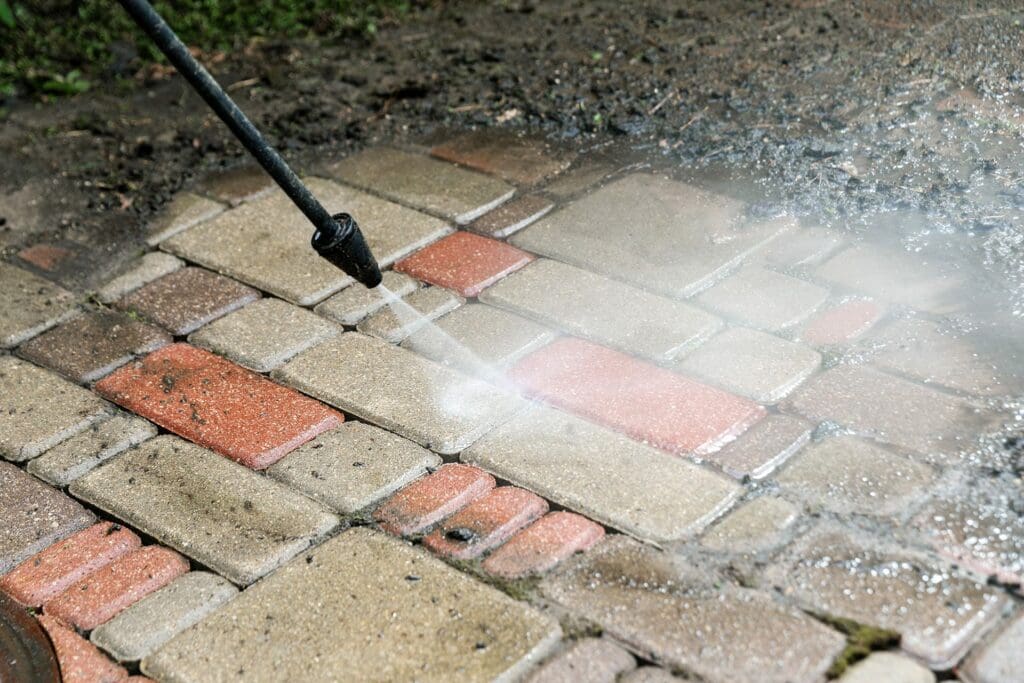
Pressure washers clean paving slabs effectively but won’t prevent weeds. Add a weed barrier or use vinegar or boiling water as eco-friendly alternatives to stop weed growth between paving slabs. Consider long-term maintenance solutions.
Are Any Specific Types of Natural Weed Killers That Work Better for Preventing Weeds Between Paving Slabs?
Consider homemade remedies like vinegar solutions or boiling water for organic alternatives to prevent weeds between paving slabs. These natural weed killers can be effective and environmentally friendly, helping you maintain a weed-free pathway without harsh chemicals.
How Often Should the Weed Barrier Fabric Be Replaced to Maintain Its Effectiveness?
To maintain weed prevention and barrier effectiveness, replace the weed barrier fabric every 2-3 years. This helps ensure that the fabric remains intact and continues to effectively block weeds from growing between paving slabs.
Is There a Specific Type of Sealant That Is Best for Preventing Weeds From Growing in the Cracks and Joints of Paving Slabs?
To prevent weed growth between paving slabs, choose a quality sealant. Opt for products specifically designed for this purpose to ensure effectiveness. Investing in the right sealant offers long-term solutions by creating a barrier against unwanted growth.
Final Words
To effectively stop weeds from growing between paving slabs, you should consider the following steps:
- Choose the right material for your paving slabs.
- Install weed barrier fabric beneath the slabs.
- Regularly sweep the area to remove debris and potential weed seeds.
- Use natural weed killers to target any emerging weeds.
- Seal cracks and joints in the paving to prevent weed growth.
By following these simple steps, you can maintain a weed-free outdoor space and enjoy a clean and tidy patio or walkway. Remember that consistent maintenance is key to preventing weeds from taking over and ruining the appearance of your outdoor area.



